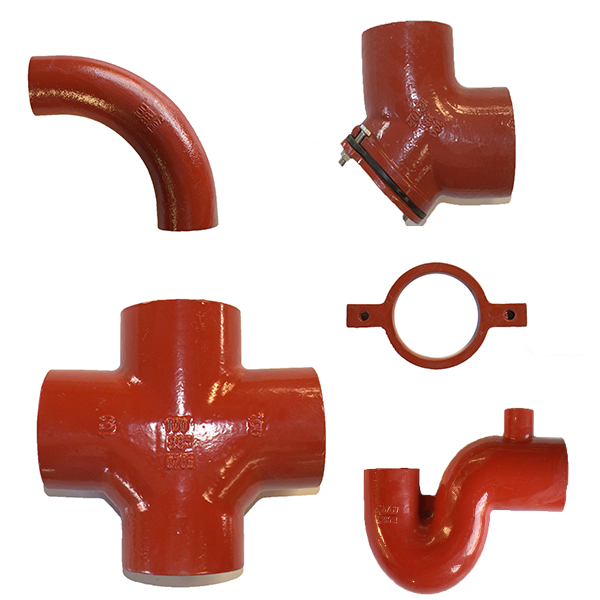-

EN 877 Epoxy-Coated Cast Iron Pipe Adhesion Test
The Cross-Cut test is a simple and practical method for evaluating the adhesion of coatings in single or multi-coat systems. At Dinsen, our quality inspection staff uses this method to test the adhesion of epoxy coatings on our cast iron pipes, following the ISO-2409 standard for accuracy and rel...Read more -

Properties, Advantages and Applications of Ductile Iron
Ductile iron, also known as spheroidal or nodular iron, is a group of iron alloys with a unique microstructure that gives them high strength, flexibility, durability, and elasticity. It contains over 3 percent carbon and can be bent, twisted, or deformed without breaking, thanks to its graphite f...Read more -

Properties, Advantages and Applications of Gray Cast Iron
Gray cast iron is the raw material used in SML cast iron pipes. It’s a type of iron found in castings, known for its grey appearance due to graphite fractures in the material. This unique structure comes from the graphite flakes formed during the cooling process, resulting from the carbon c...Read more -

Pipe Fittings: Introduction to Different Types of Pipe Fittings
There are various types of pipe fittings in each pipe systems, serving different purposes. Elbows/Bends (Normal/Large Radius, Equal/Reducing) Used to connect two pipes, so to make the pipeline turn certain angle for changing the fluid flow direction. • Cast Iron SML Bend (88°/68°/45°/30°/15°) ...Read more -

Pipe Fittings: An Overview
Pipe fittings are essential components in both residential and industrial piping systems. These small but crucial parts can be made from various materials such as steel, cast iron, brass alloys, or metal-plastic combinations. While they might differ in diameter from the main pipe, it’s cruc...Read more -

Introduction to BSI and Kitemark Certification
BSI (British Standards Institute), founded in 1901, is a leading international standardization organization. It specializes in developing standards, providing technical information, product testing, system certification, and commodity inspection services. As the world’s first national stand...Read more -

Recycling and Beneficial Use of Foundry Byproducts in Metal Casting
The metal casting process generates a variety of byproducts during casting, finishing, and machining. These byproducts can often be reused onsite, or they can find new life through offsite recycling and reuse. Below is a list of common metal casting byproducts and their potential for beneficial r...Read more -

Advantages of Cast Iron Piping: Strong Mechanical Properties and Anti-Corrosion
The DINSEN® cast iron pipe system complies with the European standard EN877 and has a wide range of advantages: 1. Fire safety 2. Sound protection 3. Sustainability – Environmental protection and long life 4. Easy to install and maintain 5. Strong mechanical properties 6. Anti-...Read more -

Advantages of Cast Iron Piping: Sustainability and Easy Installation
The DINSEN® cast iron pipe system complies with the European standard EN877 and has a wide range of advantages: 1. Fire safety 2. Sound protection 3. Sustainability – Environmental protection and long life 4. Easy to install and maintain 5. Strong mechanical properties 6. Anti-...Read more -

Advantages of Cast Iron Piping: Fire Safety and Sound Protection
The DINSEN® cast iron pipe system complies with the European standard EN877 and has a wide range of advantages: 1. Fire safety 2. Sound protection 3. Sustainability – Environmental protection and long life 4. Easy to install and maintain 5. Strong mechanical properties 6. Anti-...Read more -

What are SML, KML, TML and BML? Where to Apply Them?
Summary DINSEN® has the right socketless cast iron waste water system available whatever the application: waste water drainage from buildings (SML) or laboratories or large-scale kitchens (KML), civil engineering applications such as underground sewer connections (TML), and even drainage systems ...Read more -

Introduction to Ductile Iron Pipe Systems: Strength, Durability, and Reliability
Since its introduction in 1955, ductile iron pipe has been the preferred solution for modern water and wastewater systems, renowned for its exceptional strength, durability, and reliability in conveying raw and potable water, sewage, slurries, and process chemicals. Crafted and manufactured to m...Read more






